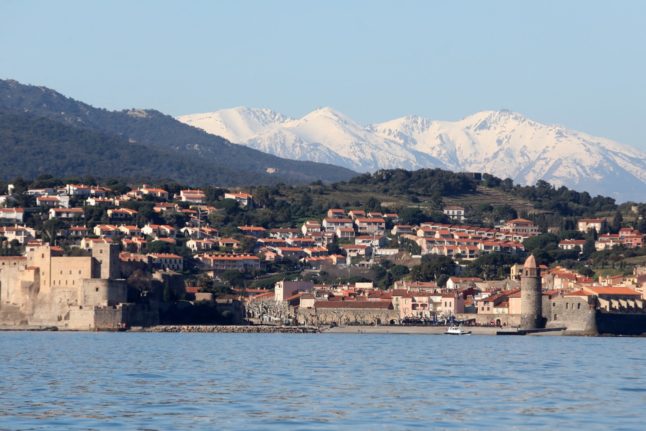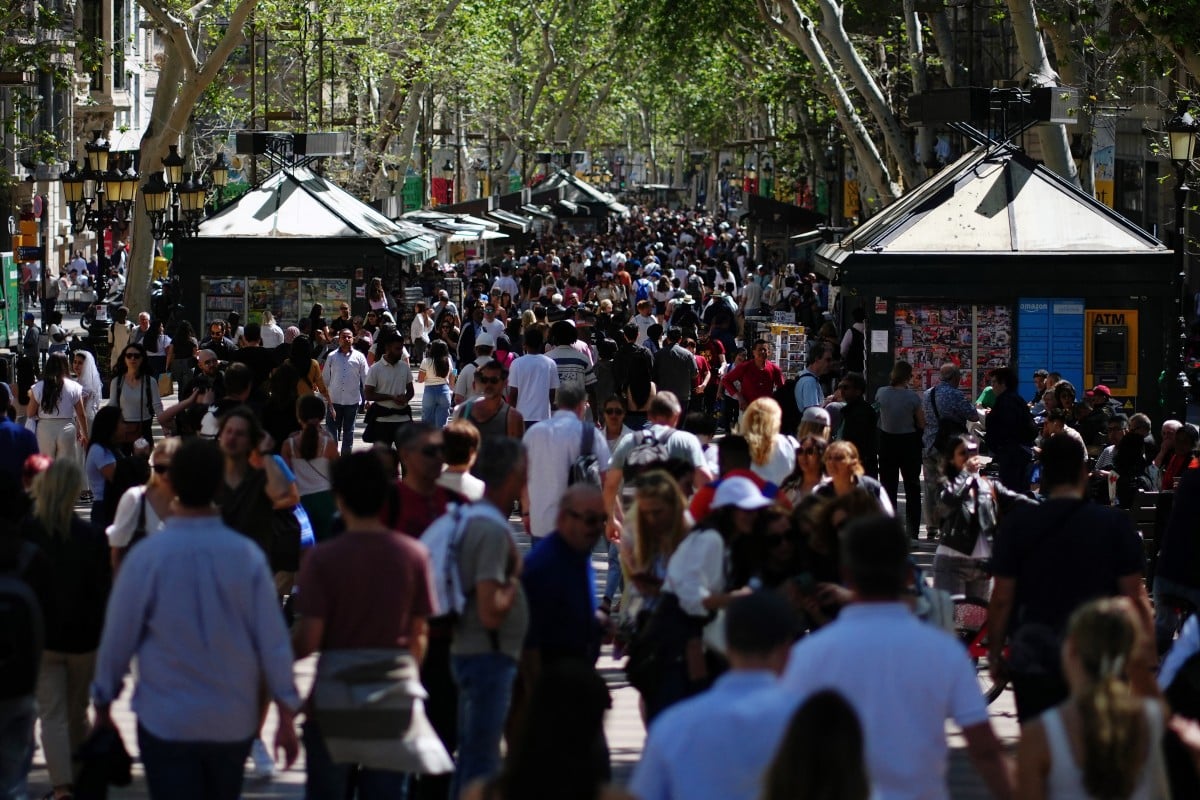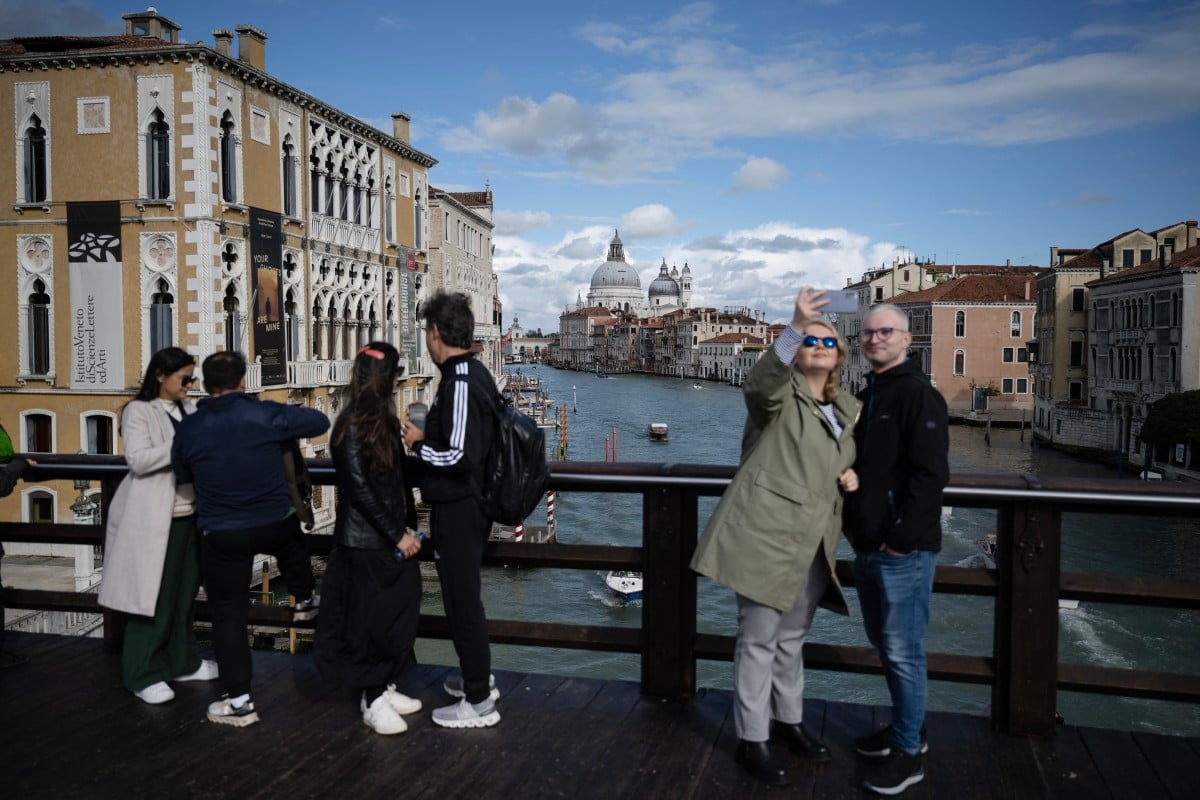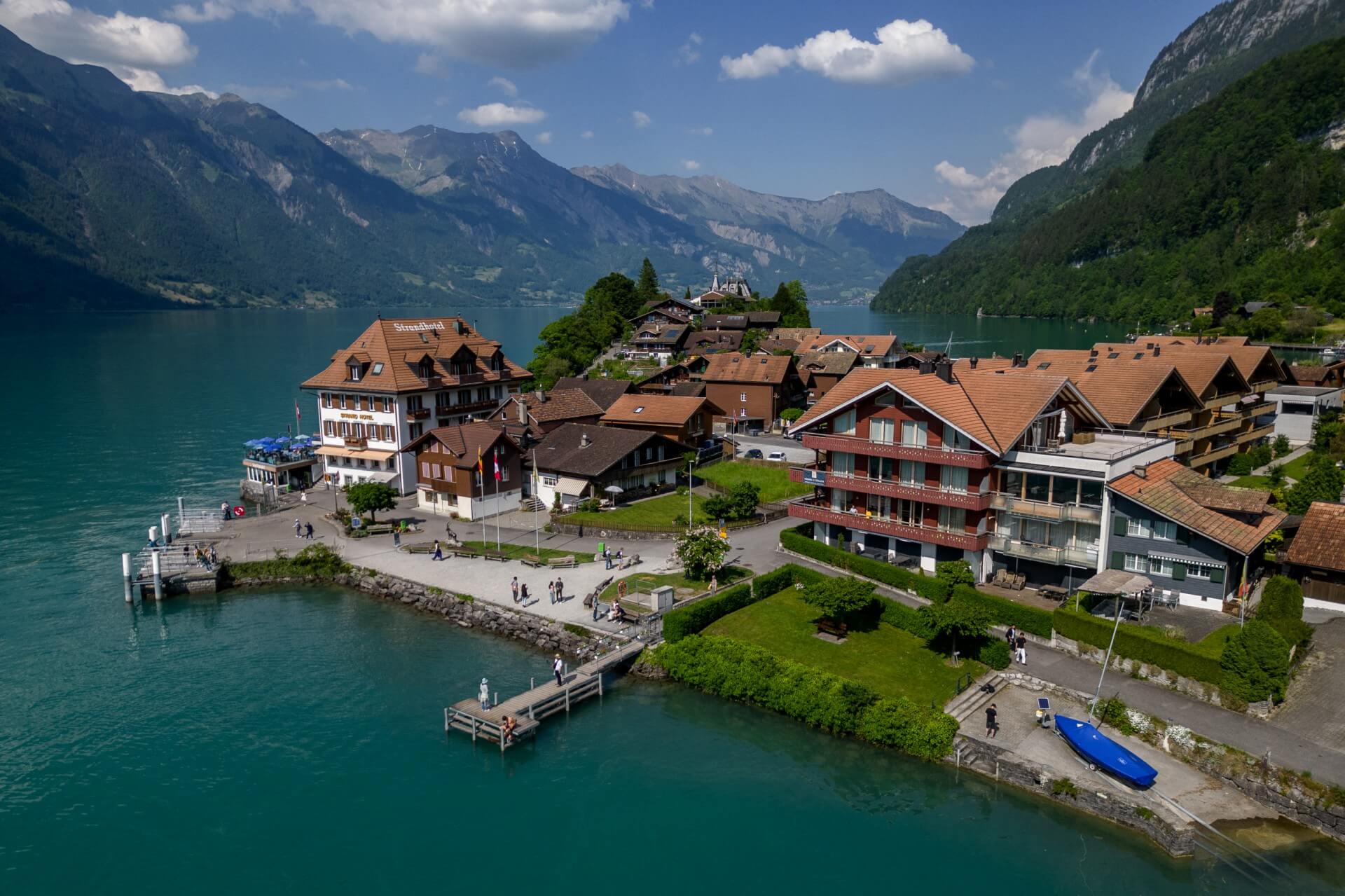Every year, France votes for it’s favourite village through a popular TV show called Le Village Préféré des Français (France’s favourite village), which airs on France 3.
The programme has been running since 2012 and continues to get over 2.6 million viewers each year.
The final 14 list includes one village from each French region (plus one from France’s overseas territories). Voting will close on March 8th with the winner announced over the summer. The winning village usually benefits from an increase in tourism.
READ MORE: Vineyards, mountains and islands – how to plan a car-free trip to France
For viewers, it’s a way to discover some of France’s hidden treasures. The list of contenders is carefully selected and must tick the boxes of several criteria, including rich cultural traditions, beautiful nature or culinary specialities.
Here are the candidates for 2024;
Cléron – located in the Doubs département in Burgundy
Home to just 300 inhabitants, Cléron is known for its castle, which dates back to the 13th century.
Cléron is also located near the Valbois ravine, a nature reserve. Limestone cliffs stretch above the valley, where a stream runs through.
The town is also known for the cows’ milk cheese Édel de Cléron.
Le Village préféré des Français : Cléron dans le Doubs représente la région pour l’édition 2024
➡️ https://t.co/ux0cE6fwh1 pic.twitter.com/Cmz9EKMucA— France Bleu Besançon (@bleubesancon) February 19, 2024
L’Ile-Tudy – Finistère département in Brittany
Formerly a fishing village, the l’Île Tudy is one of the region’s most popular seaside resorts. It is known for its large sandy beaches.
The estuary of the Pont-l’Abbé river is found near the town, making it a great spot to see rare birds and seashells.
Le jeudi c'est #JeudiPhoto ! 📷
– "J'veux du soleil, j'veux du soleeeil (pour dimanche surtout) 💛 –
On compte sur vous pour en parler autour de vous 🙏 Rendez-vous ce dimanche à l'Île-Tudy ! pic.twitter.com/MOIKISqjqe
— Defigena (@Defigena) June 6, 2019
Collioure – Pyrénées-Orientales in Occitanie
In the town of Collioure, you can see the Mediterranean on one side, and the foothills of the Albères massif on the other.
Home to many towers, castles and forts, the town was once a summer residence for the Kings of Majorca. These days, you can enjoy the narrow streets, colourful houses, small port, and pebble beach.
Collioure is also known for anchovies and red wine.
View from #Collioure, France, towards Forte St Elme, a military fort built between 1538 and 1552, that overlooks the town. Collioure is a charming town in the department of Pyrénées-Orientales, on the shores of the Mediterranean. pic.twitter.com/gqURiUnUpA
— Photos by Vertego (@PhotosbyVertego) February 18, 2024
Saint-Dyé-sur-Loire – Loir-et-Cher in Centre-Val-de-Loire
Along the banks of the Loire river, Saint-Dyé-sur-Loire village has long been regarded as a gateway to the châteaux of the Loire Valley.
It dates back to the 6th century, and it was called the ‘Port of Chambord’ during the Renaissance when it was used to transport building materials to the now famous Château de Chambord.
Plenty of important figures in French history, including Molière and La Fontaine, have spent time in the village over the years.
Village préféré des Français 2024 : quels sont les atouts de Saint-Dyé-sur-Loire en lice pour le titre ? https://t.co/0DV1llfosP pic.twitter.com/7qyMSO4hdI
— Indre et Loire (@IndreetLoire37) February 19, 2024
Thomery – Seine-et-Marne in the Paris region (Île-de-France)
A small town of 3,500 inhabitants, Thomery is found between Moret and Fontainebleau, about an hour south of Paris.
Sitting on a hillside on the edge of the forest, Thomery historically produced the Chasselas Dorée grape, which was very popular at the end of the 19th century. It’s traditionally grown against a wall and there are 250km of walls, with some still growing vines alongside them.
It is also not far from the Atelier Rosa Bonheur, the famous painter of the 1850s who moved her studio to the Château de By.
Murs de vignes de Thomery (à partir de 1730), ayant précédé les murs à pêches de #Montreuil #GrandParis pic.twitter.com/TomAaCAeom
— Morvan Caradec (@morvan_caradec) August 7, 2016
Mers-les-Bains – Somme in Hauts-de-France
This village in northern France is known for its chalk cliffs, pebble beach and colourful houses. It is a sister town to two other seaside resorts in the area – Eu and Le Téport.
Historically, Mers-les-Bains was a small fishing village, but it became a popular seaside resort in 1860 after a rail line was opened between Paris and Le Tréport.
The town also has its own particular tradition – locals dress up in their best period costumes for the Belle Époque Bather’s Festival.
Monthermé – Ardennes in Grand-Est
Dating back to the Middle Ages, the town has been rebuilt several times and survived many wars. Its 15th century church still stands, as does the nearby Laval Dieu Abbey, where local monks have spent years cultivating medicinal plants to offer to local inhabitants.
Monthermé is along the Meuse river, which loops around the city. The town hosts many artisans, and it is especially known for glassmakers.
In terms of food and drink, visitors can enjoy local craft beer.
La célèbre boucle de Monthermé pic.twitter.com/BQHIV7M9Rb
— Thierry michel photographie (@thierrymic) July 25, 2023
Aregno – Haute-Corse (northern Corsica)
Found in upper Corsica, the old hillside village of Aregno has been populated since at least Roman times. It finally became French in the 18th century, but throughout its long history it has been known for producing almonds and oranges.
Visitors can enjoy can find both the seaside and mountains in accessible distance, as well as the 15th century Trinity Church.
Beautiful, Hillside Village, Aregno, Corsica, France#Photography #Nature pic.twitter.com/GNGoFTKLm2
— Top Photography Mag (@PhotoDYKMag) May 1, 2017
Deshaies – Guadeloupe – one of France’s overseas territories
A small fishing village surrounded by forest, Deshaies is found on the northwest coast of the Caribbean island of Guadeloupe.
Notable for its many Caribbean-style wooden houses, the town is a popular stopping point for cruise ships.
Visitors enjoy the village botanical garden, as well as the former Coluche estate, which is known for its garden filled with rare plants and beautiful parrots.
Le village préféré des Français 2024 : votez dès aujourd'hui parmi ces 14 propositions :https://t.co/eexqWq1fXB
(en illustration, un p'tit paradis sur Terre : Deshaies ❤️) pic.twitter.com/j40ALsA4EB
— LeBlogTVNews (@Leblogtvnews) February 19, 2024
Ry – Seine-Maritime in Normandy
About 20km east of Rouen in the Crevon valley, Ry was the administrative centre of the area during the Revolution (from 1790 until 1801).
The French author Gustave Flaubert apparently used the charming village as inspiration for his famous novel Madame Bovary. Tourists can visit the 12th century Saint-Sulpice church.
The town is also known as a stopping point along the GR 25 hiking trail, which passes directly through it.
READ MORE: Hiking in France: The GR footpaths explained
C'est le village de Ry en @seinemaritime qui représente la @RegionNormandie pour le Village préféré des Français 2024 @PrefereFrancais
➡️ https://t.co/9H06qoHAIP pic.twitter.com/7QA5fM6aOT
— France Bleu Normandie (Seine-Maritime, Eure) (@fbleuhnormandie) February 19, 2024
Villeréal – Lot-et-Garonne in Nouvelle-Aquitaine
This south-western French town has already been recognised by the label ‘Les Plus Beaux Villages de France’.
It was founded in 1269 by Alphonse de Poitiers, who fortified the town. During the Hundred Years War, it was occupied by the British, and in subsequent centuries it saw more destruction during the wars of religion.
However, much of its iconic architecture from the Middle Ages remains in place, including its unique 14th century market hall which is still in use.
#Villereal #France @discoverfrance Stunning town and village https://t.co/6LmKQzCm9O @foodforaking pic.twitter.com/vyc6kzWUHk
— Charlotte Ellis (@Ellisphotosuk) January 31, 2016
Sallertaine – Vendée in Pays de la Loire
Built on a limestone islet, Sallertaine is known for its surrounding salt marshes.
The village is home to a little over 3,000 people, and it is has also already been given an award – the ‘Ville & Métiers d’art’ status, for its narrow streets and status as a village of artisans.
Sallertaine has a 12th century Romanesque church, as well as over 25 craft workshops, including for pottery, leather-work, embroidery, sewing and jewellery.
Bikes lead the way in this delightful Vendée village – Sallertaine je t’aime pic.twitter.com/LJihQywwHa
— Jane Lorimer (@LorimerJane) July 24, 2019
Gassin – Var in Provence-Alpes-Côte d’Azur
Overlooking the Gulf of Saint-Tropez at 200m above sea level, Gassin is known for its beautiful views and pastel-coloured walls.
It is home to L’Androuno, one of the world’s most narrow streets, as well as several nearby wineries, gardens, and a golf course.
✨#Gassin, Village @PrefereFrancais en 2024?❇️
🗳️ Le village du @GolfeStTropez sélectionné pour représenter @MaRegionSud durant l'émission en juin prochain
☀️ Les atouts et spécificités de la commune sont nombreux➕ d'infos et votes jusqu'au 8/03 ici : https://t.co/9XlrarKDl7 pic.twitter.com/4GHyJ1iXlI
— Var Tourisme (@VarTourisme) February 20, 2024







 Please whitelist us to continue reading.
Please whitelist us to continue reading.
Deshaies (De’hay) is the place where they film ‘Death in Paradise’. This may or may not affect your wish to visit the place. My wife and I have been going to Guada for more than 15 years. We don’t much like Deshaies as it is now but YMMV.